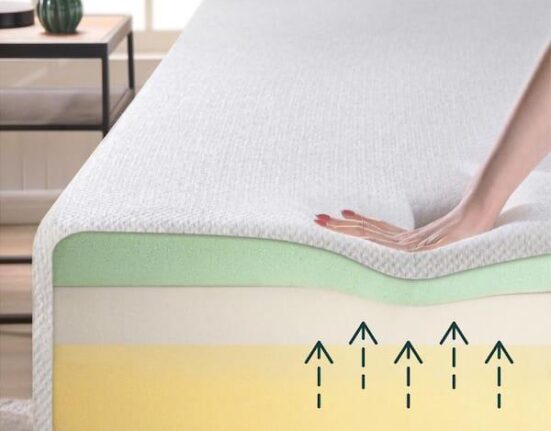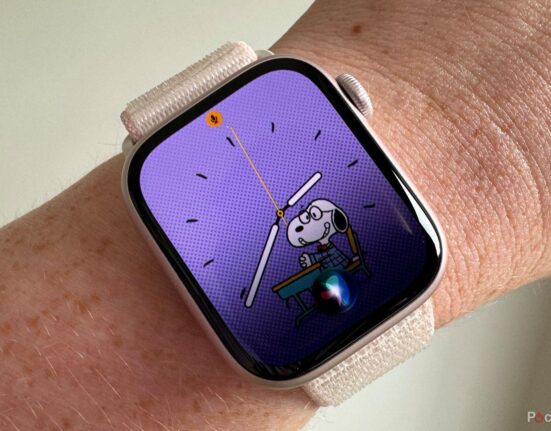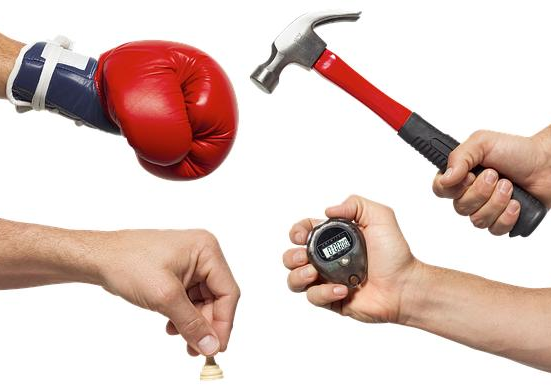In an age where well-being takes center stage,the quest for balance amid the chaos of modern life has never been more crucial. As stress levels rise and emotional well-being becomes a focal point for many, the technology we wear can offer valuable insights into our inner states. enter the world of wearables, an innovative blend of fashion and function designed to track not only our physical health but also our mental and emotional landscapes. This article explores the best wearables on the market for stress and mood tracking, delving into their standout features, user experiences, and the ways they can empower individuals to take control of their mental wellness. join us as we navigate this evolving landscape, one device at a time, to uncover how these tech companions can support our journey toward a more balanced and mindful life.
Top Innovations in Wearable Technology for Stress and Mood management
Recent advancements in wearable technology have sparked a revolution in how we manage stress and mood. Devices like smartwatches and fitness bands now come equipped with sophisticated sensors that monitor physiological indicators such as heart rate variability, skin temperature, and even blood oxygen levels.These metrics provide users with real-time feedback on their mental states,empowering them to take control of their emotional well-being. Some of the most notable features in these devices include:
- Biofeedback and Relaxation Techniques: Many wearables offer guided breathing exercises or meditation aids, allowing users to practice mindfulness anytime, anywhere.
- Sleep Tracking: Accurate sleep monitoring helps users understand their rest patterns, enabling them to make informed adjustments to improve overall mood.
- Personalized Insights: By analyzing data trends over time, users receive personalized recommendations tailored to their unique stress triggers and mood fluctuations.
The user experience has been enhanced further with intuitive interfaces and app integrations, making stress and mood management seamless. Most devices now include companion apps that consolidate data and visualizes insights in an easily digestible format. As a notable example, the wearables can generate weekly reports that highlight stress patterns alongside other health metrics. This helps users identify triggers and adjust their daily routines accordingly.
Here’s a quick comparison of some top wearables that are leading the charge in stress and mood tracking:
| Device | Main Features | User Rating |
|---|---|---|
| Apple Watch Series 8 | Heart rate monitoring, Mindfulness app, Sleep tracking | 4.8/5 |
| fitbit Charge 5 | Stress management tools, Daily readiness score, sleep score | 4.6/5 |
| Garmin Venu 2 | Health snapshots, Relaxation reminders, Stress tracking | 4.7/5 |

Comparative Analysis of Leading Stress Tracking Wearables
When evaluating stress tracking wearables, several factors come into play that considerably influence user experience and effectiveness. One of the most notable devices in the market is the Fitbit Sense, which features an advanced stress management system utilizing an electrodermal activity sensor to analyze skin temperature changes and provide insights into stress levels. Additionally, its integration with guided breathing exercises enhances the overall user experience, allowing users to manage stress proactively. In comparison, the Apple Watch Series 7 delivers robust heart rate variability (HRV) monitoring and an intuitive interface. It also includes features like mindfulness reminders and sleep tracking that could indirectly contribute to stress reduction, making it a valuable tool for holistic wellness.
Another contender is the Garmin Venu 2, which impresses with its all-day stress tracking capability. It employs a unique Body Battery feature, allowing users to understand energy levels and manage activities accordingly and thus, aiding in stress management. On the other hand, the Whoop Strap 3.0, with its subscription model, offers in-depth analytics of strain, recovery, and sleep—a comprehensive view that encourages users to optimize their physical output while monitoring stress levels effectively. Below is a concise comparison of these leading wearables:
| Wearable | Key Features | User Experience |
|---|---|---|
| Fitbit Sense |
|
Intuitive and user-pleasant with a strong community feature. |
| Apple Watch Series 7 |
|
Sleek design with seamless iOS integration. |
| Garmin Venu 2 |
|
Focus on fitness with practical insights into energy management. |
| Whoop Strap 3.0 |
|
Highly detailed but requires commitment to the subscription. |

User Experience and Comfort: Choosing the Right Device for You
when it comes to wearables for stress and mood tracking, the user experience is pivotal. The ideal device should seamlessly integrate into your daily routine without causing disruption. Consider features that enhance usability, such as:
- Intuitive Interface: A user-friendly app that is easy to navigate helps you manage stress and mood effortlessly.
- Comfortable Design: Look for lightweight materials and adjustable straps that can be worn all day without causing discomfort.
- Battery Life: A long-lasting battery means you won’t have to worry about frequent charging interruptions.
Additionally, it’s essential to evaluate the tracking accuracy and data presentation of the wearable. Devices that offer meaningful insights into your stress levels and emotional patterns through clear visualizations can significantly enhance user engagement.Below is a comparison table showcasing key features from some top contenders:
| Device | Accuracy | Battery Life | Comfort Level |
|---|---|---|---|
| Wearable A | High | 7 days | Excellent |
| Wearable B | Medium | 5 days | Good |
| Wearable C | High | 10 days | very Good |
By prioritizing these aspects, you can choose a wearable that not only tracks your stress and mood but also enhances your overall experience, making it a valuable companion in your wellness journey.

Incorporating Wearables into Daily Life for Enhanced Well-Being
Integrating wearables into everyday routines can significantly enhance mental well-being by providing real-time insights and fostering healthy habits. These devices, equipped with various sensors and tracking capabilities, allow users to monitor their stress levels and moods throughout the day. By analyzing data through dedicated apps, individuals can identify stress triggers, track emotional patterns, and discover opportunities for self-care. Some of the remarkable features found in these wearables include:
- Heart Rate variability (HRV) Monitoring: Offers insights into stress response and recovery.
- Mood Logging: Enables users to record emotional states, helping to pinpoint fluctuations associated with daily activities.
- Relaxation Techniques: Provides guided breathing exercises and meditation prompts directly through the device.
Additionally, user experience plays a pivotal role in how effectively individuals can integrate these tools into their lives. A seamless interface and customizable notifications can keep users engaged without feeling overwhelmed.Many wearables also include community features,offering social support through shared experiences and accountability. Below is a quick comparison of popular wearable options notable for their stress and mood tracking:
| Device | Key Features | User Experience |
|---|---|---|
| Fitbit Charge 5 | Stress management tools, Daily Readiness Score | User-friendly app with personalized insights |
| Apple Watch Series 8 | Mood tracking, Mindfulness reminders | Intuitive interface with seamless integration |
| WHOOP Strap 3.0 | Heart rate monitoring, Recovery tracking | Data-driven approach, community challenges |
The Conclusion
As we navigate the complexities of modern life, being attuned to our emotional and mental well-being is more important than ever. The wearables we’ve explored offer a fascinating glimpse into how technology can serve as a companion on our journey toward understanding and improving our stress and mood. With features designed to monitor physiological responses, provide insightful analytics, and even offer guided meditations, these devices empower us to take charge of our mental health.
In this ever-evolving landscape, it’s essential to choose a wearable that aligns with your lifestyle and personal preferences. The right device can transform your approach to self-care, offering not just data, but a pathway to greater awareness and self-betterment.As you consider integrating a wearable into your routine, remember that technology is but a tool; the real impact comes from the mindfulness and intention we bring to our daily lives.
So whether you’re seeking to manage stress, enhance your mood, or simply gain more insight into your emotional patterns, there’s a wearable out there that can help illuminate your path. Embrace the journey, and let the rhythms of your heart and mind guide you to a more balanced state of being. After all, knowledge is power, and in the realm of mental wellness, every insight counts.












Leave feedback about this